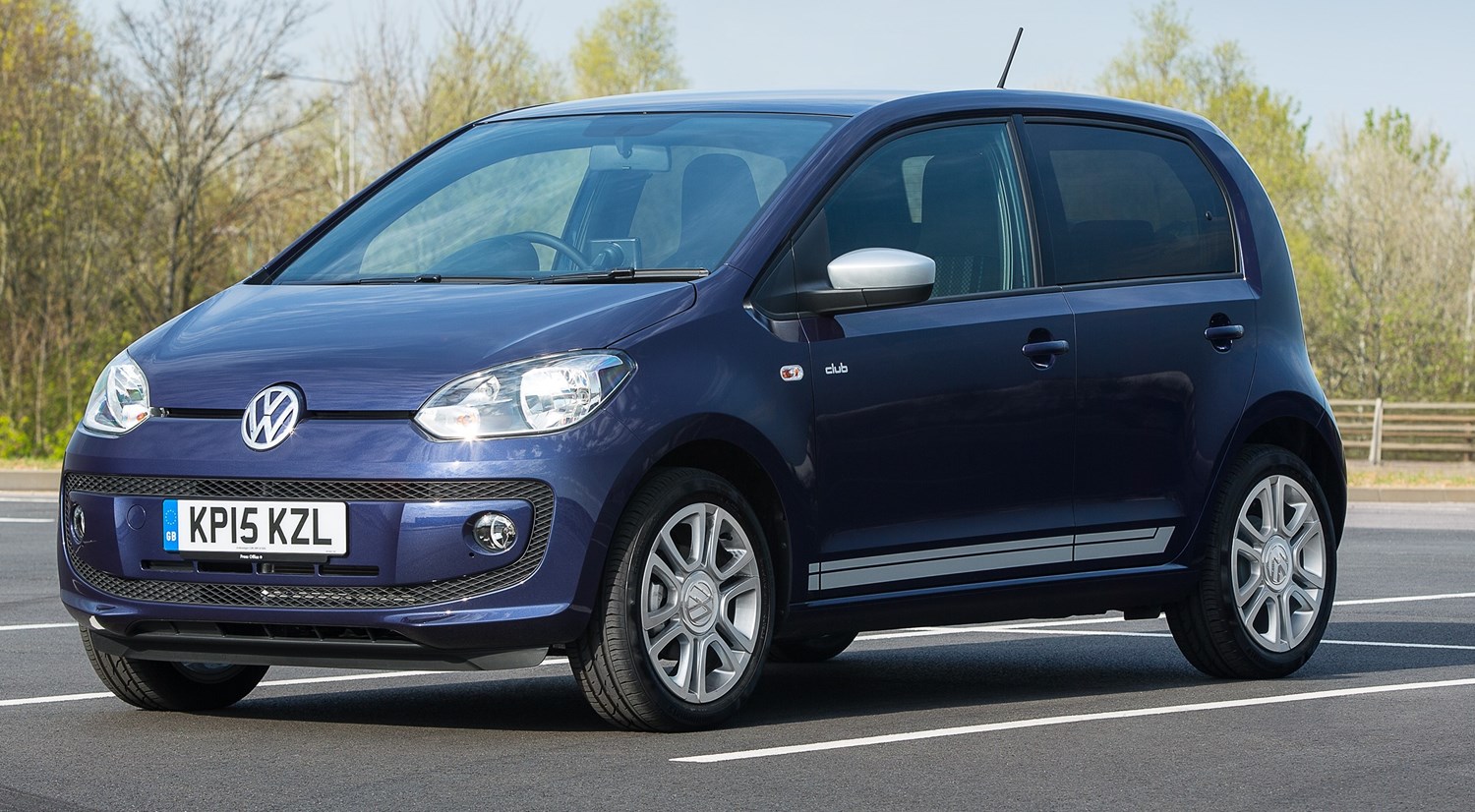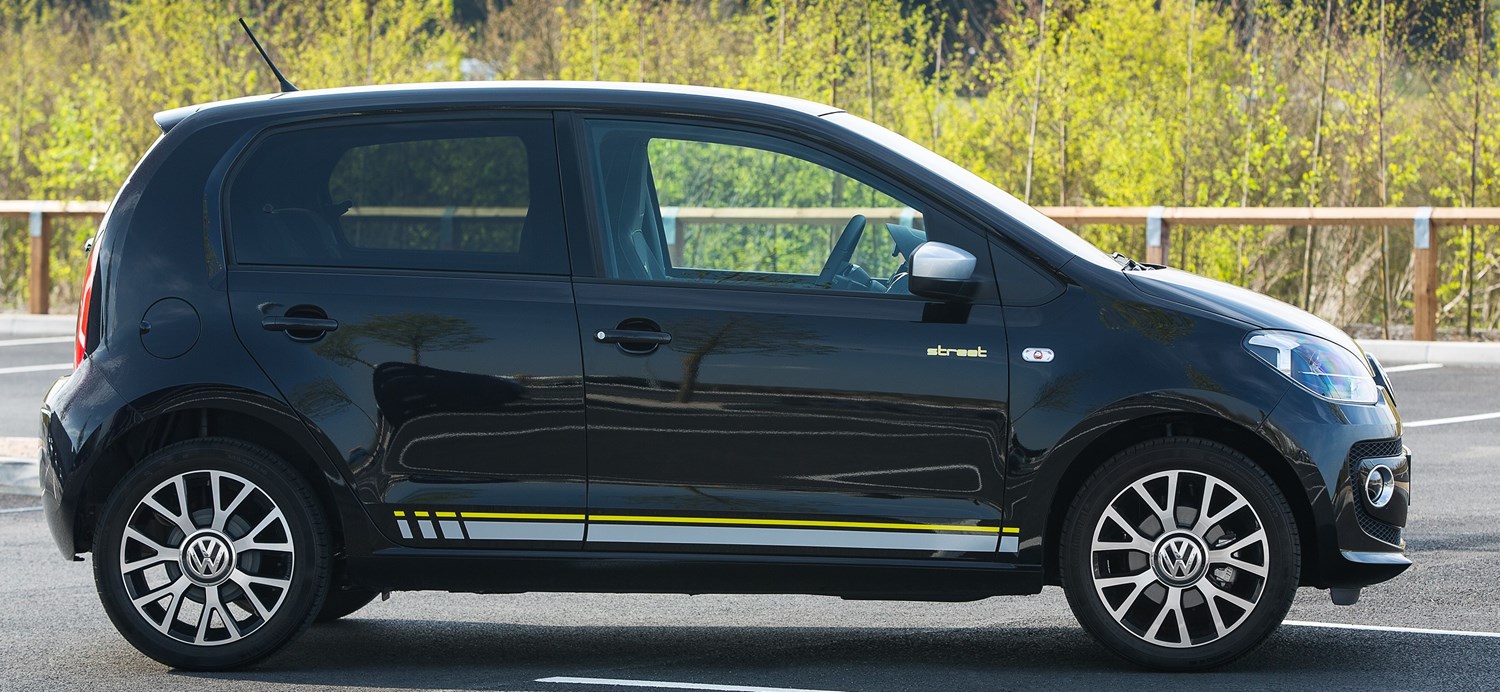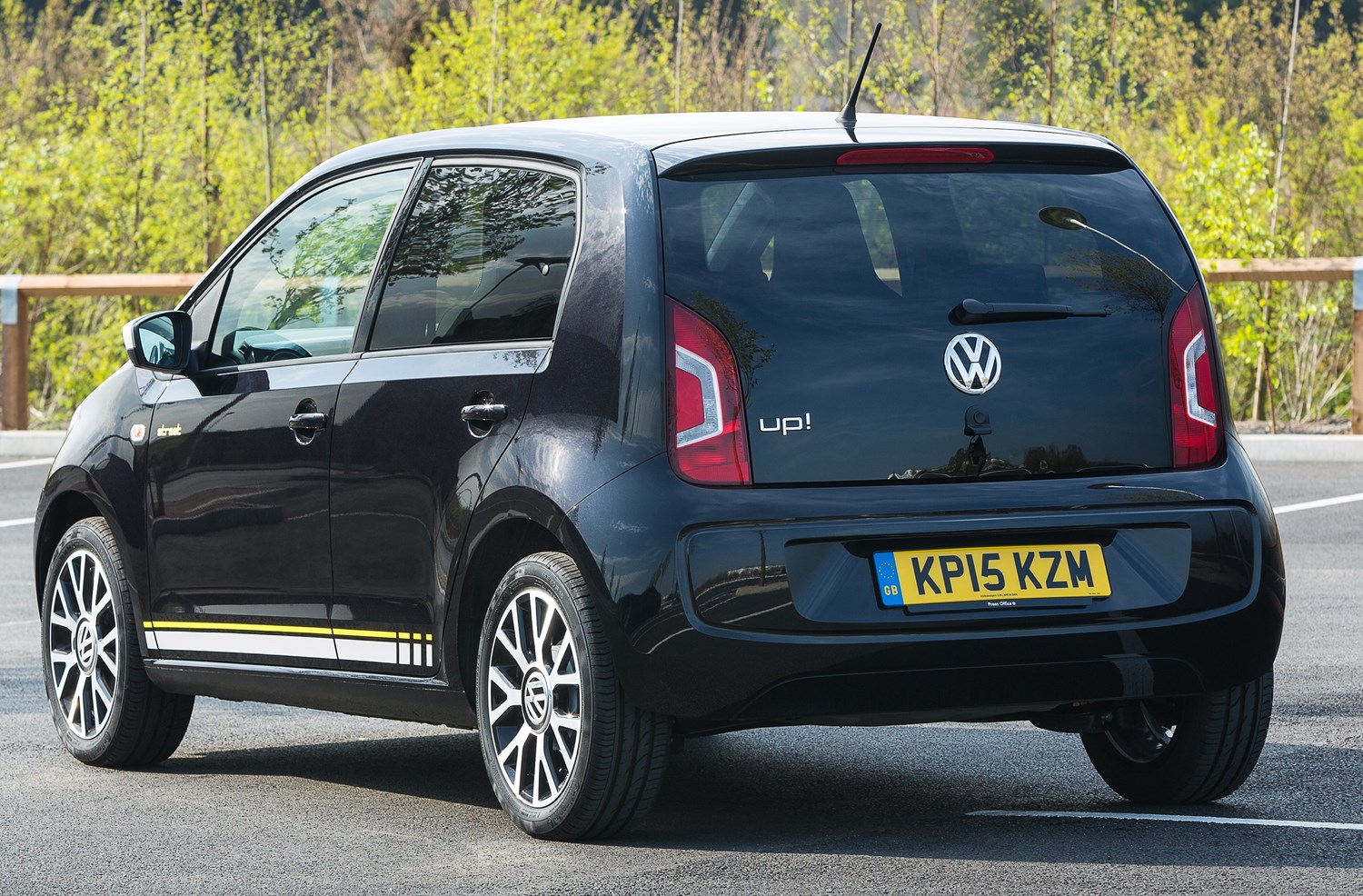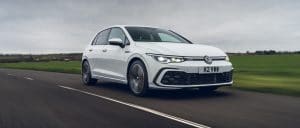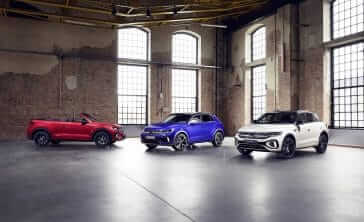Model review
The up! was introduced in 2012 as Volkswagen's entry to the city car sector. Only slightly smaller than the original, first generation Volkswagen Golf, the Up was introduced in part to replace the Volkswagen Fox – which is still sold in other markets – that was itself a replacement for the Lupo.
It is extremely similar to the Skoda Citigo and Seat Mii, with all three based on the Volkswagen Group New Small Family (NSF) platform and built in the same factory in Bratislava. The original concept for the Up, shown in 2007, was rear-engined and rear-wheel drive, like the smart fortwo, but the production car uses a more conventional front-wheel drive layout.
The majority of the Up range uses small petrol engines, although an electric version – amusingly dubbed the 'e-up' – is also available. Other models also have significantly different names from the norm for Volkswagen, with Take Up, Move Up, High Up and Up Beats trim designations. An Up GTI model is due next year.
Rivals for the Up include its own siblings, the Citigo and Mii, but there's a number of other city cars too. Hyundai's i10 and its twin the Kia Picanto are among them, along with cars like the Vauxhall Adam, Fiat 500 and the Toyota Aygo, Peugeot 108 and Citroen C1.
Available as both a three-door and a five-door car, the Up was facelifted in 2016.

Latest model
The Up is still in its first generation, but it was updated in 2016. The update brought new styling at the front and rear, along with standard equipment upgrades across the range.
The engine range was also updated which, though available with roughly the same power outputs as before, focus on reduced emissions by Volkswagen's BlueMotion Technology. This includes stop/start systems and regenerative braking to top up the battery. A five-speed automatic is available on the lower output units.
One new engine was introduced in the facelift, which adds turbocharging to the mix. This 1.0-litre TSI engine produces 89hp and similar performance to the original Golf GTI. An even quicker Up GTI is due next year, while an all-electric e-up, with a 93 mile battery range was reintroduced shortly after the facelift.
It's available in three or five-door versions, with the five-door model being much better for accessing the two compact rear seats. Unlike some rivals, which offer full length fabric roofs as a convertible option, the Up can be specified with a panoramic sun roof.
The Up's trim level names avoid the usual Volkswagen system in favour of more jovial alternatives. The entry car is called the Take Up, while there's also Move Up and High Up versions. A special edition in collaboration with audio brand Beats is, appropriately, called Up Beats and includes a 300W, seven-speaker sound system with a subwoofer in the boot (reducing the total load area by 8 litres).
Personalisation is a strong suit for the Up, with 13 exterior colours, graphics, contrasting roof and mirrors, five dashboard colours and five additional choices of alloy wheel colours.
Although standard equipment has improved since the first generation car, the entry-level Take Up still has steel wheels, a traditional heater system and a 3.1-inch monochrome display for operating the CD radio – although DAB is standard. The system does allow for smartphone integration and an accompanying Maps + More app will allow you to use your phone in place of this display.
Value for money
With a starting price at less than £10,000, the Up does seem to be good value. However, at this price the specification isn't great.
Buyers of this entry-level Take Up model miss out on a significant number of modern amenities, with only the curious inclusion of DAB radio as the exception. Steel wheels instead of alloys, an old-fashioned heater system instead of air-conditioning, a single-piece rear seat backrest and no steering wheel adjustment is all like being back in the 1990s again. You'll need to spend a lot more money to get things like reversing cameras or climate control.
The options list isn't too pricey however. The most expensive single option is the £700 panoramic roof and it's possible to get a few options like cruise control relatively cheaply.
Running costs are good all round, with the 1.0-litre, three-cylinder engines all returning over 60mpg on paper and CO2 emissions that qualify for low tax brackets. Insurance costs are good, with some cars even sitting in the lowest group 1 band, and depreciation is stellar for a city car.
Ultimately while the purchase price could be lower – or the standard equipment list better – it's a decent value buy.
Looks and image
Volkswagen has a reputation for making well-built cars that are decent to drive, if perhaps a little unspectacular. The Up fits that format perfectly.
It's not the boldest design out there, but the Up is a reasonably distinctive car (ignoring its stablemates) and avoids a lot of the weirder design cues that permeate smaller cars.
Although the brand has a mainstream premium image, it can't carry over to the cheap Up. It's probably the most premium car in its class, but it feels cheap in a number of areas where other Volkswagens do not.

Space and practicality
The Up is a very small car and as such your expectations of outright practicality should be tempered. That said, the boot itself isn't bad, and the 251 litres on offer is close to the class best. It isn't limited in the electric version either, which still gives 250 litres.
The boot space itself is reasonably wide, deep and regular, although there's quite a step with the rear seats down. Base models don't have a split-folding rear either, so if you do need a larger load area, make sure you only have one passenger. With the back seats folded, the Up has up to 959 litres of load space.
There are only two seats in the rear, although this is pretty common in city cars, and they aren't the roomiest of places. Access is good though, at least on the five-door cars.
EuroNCAP tested the Up in 2011, before its UK launch. It scored five stars at the time and performed well in all areas. It was also given an advanced reward for having an autonomous emergency braking system to prevent low-speed collisions.
Engines
The Up bears four engine choices, with three petrol engines that appear rather similar and one electric option.
The range begins with a 1.0-litre (999cc), three-cylinder petrol engine that produces 59hp. Although the Up doesn't weight that much, this takes 14.2s to pull the car to 60mph (15.1s if you opt for the automatic) and on to a top speed of 99mph. Emissions are as low as 96g/km CO2 if you opt for a model with stop/start, which makes for a 68.9mpg combined fuel economy.
A slightly quicker version is also available, with the engine retuned to produce 74hp. This brings 0-60mph times down to 13.0s, depending on gearbox and trim, and the top speed moves up to 106mph. CO2 emissions are still low, although you will need stop/start to bring them under 100g/km. This will also result in a 68.9mpg combined fuel economy.
The final petrol option, only on High Up and Up Beats models, is a turbocharged version of the same engine. With 89hp, acceleration from 0-60mph is under 10 seconds at 9.7s and the top speed is around 115mph. Emissions do move up to 108g/km CO2, with 60.1mpg combined being the result.
Also available is the electric 'e-up'. This uses an 81hp electric motor powered by an 18.7kWh battery, giving up to 93 miles of range. It has a top speed of 81mph, while 0-60mph takes 12.2s.
Running costs
City cars generally don't cost the Earth to run and Up is no exception. Regardless of your engine choice you can look forward to a 60mpg+ fuel economy on paper, and the low purchase price and low emissions means that road tax is inexpensive too.
All models have low insurance groups too. The highest is, appropriately, the High Up 89hp car, which sits in group 10, but some versions of the entry Take Up and Move Up are in the lowest possible group, group 1. Most cars are between groups 2 and 5.
The e-up will be a little more expensive to insure due to the price and batteries, but in return you get zero emissions and a 93 miles range from a few pennies of electricity.
The fact that the Up shares a huge number of parts with the Citigo and Mii means that servicing and repair is a simple and inexpensive task and so long as it remains in warranty, the Up should be a cheap car to run.

Things to look out for
The Up is another dependable Volkswagen, with very few woes of any kind. However, a good chunk of early cars were recalled for a side-airbag fault that may result in the airbags not being deployed when needed, so ensure that this work has been carried out for peace of mind.
However, several owners report issues with the clutch and the automatic gearbox, which isn't a true automatic, rather an automated manual - a manual gearbox with an electronic control unit. Alongside a few reported issues, it's not the smoothest of units. Owners do struggle with the poor infotainment system too.
Also be aware that this is a car often used in high-traffic environments and tight spaces. Keep an eye out for the typical damage – kerbed wheels, scraped bumpers – that might suggest the car's seen a little abuse.
Rivals
There's myriad alternatives in the city car line-up, and it's quite a varied list too. The Up faces competition in-house from the cheaper Skoda Citigo and Seat Mii, which share so much with the Up that it's hard to tell between the cars with the badges covered up.
Another trio of rivals comes from the Toyota Aygo, Citroen C1 and Peugeot 108. These are also built together and each has a convertible option to add to the recipe. The highly rated Hyundai i10 and Kia Picanto are also worth considering, as is Fiat's retro-chic 500.
The most unusual alternative is the Renault Twingo and its sibling the smart forfour. These are rear-engined, rear-wheel drive city cars.
Depreciation warning
Depending on the specification you choose, the Volkswagen can be one of the slower depreciating cars out there.
The entry level models with the less powerful engines are not likely to be as enticing second-hand compared to something with a few toys and a bit of get up and go, so choose your Up carefully.
Regardless though, the percentage of retained value is decent for a city car, and as the car isn't that expensive to buy in the first place you won't be losing out on a huge chunk of money either.
